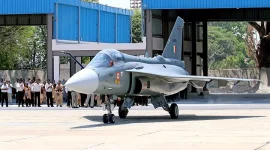- Views: 2K
- Replies: 6

In a major boost for India's defence capabilities, Hindustan Aeronautics Limited (HAL) is set to deliver 419 Indian Multi-Role Helicopters (IMRH), significantly enhancing the capabilities of the Indian Air Force (IAF), Indian Army, and Indian Navy. This ambitious procurement plan includes 353 IMRH units for the IAF and Army, and 66 deck-based variants specifically designed for naval operations.
The IMRH program, spearheaded by the IAF in close coordination with the Indian Army, aims to replace the aging fleet of Mi-17 helicopters. The IMRH boasts enhanced capabilities in terms of payload, range, and high-altitude operation, making it suitable for diverse operational needs.
The IMRH is a versatile, twin-engine medium-lift helicopter designed for a multitude of roles, including troop transport, combat search and rescue, medical evacuation, and logistics support. Its development emphasizes indigenous technology, promoting self-reliance in defence manufacturing.
HAL has been developing the IMRH for several years, with the first production models expected to roll out by the end of this decade. This timeline aligns with the planned phasing out of the Mi-17 fleet, ensuring a smooth transition to the new helicopters.
The Indian Navy will lead the development of the deck-based multi-role helicopter (DBMRH), a heavier version of the IMRH adapted for naval operations. This variant will be crucial for anti-submarine warfare, anti-surface warfare, and other maritime-specific missions.
The DBMRH will incorporate features like blade folding for compact storage on ships, enhanced corrosion resistance for maritime environments, and specialized avionics for naval operations, ensuring seamless operation from aircraft carriers and other naval vessels.
This large-scale procurement of IMRH helicopters represents a significant step forward in India's military modernization and its pursuit of self-reliance in defence technology. The collaboration between HAL, the IAF, the Indian Army, and the Navy in this endeavour showcases a unified approach to strengthening India's defence capabilities across all domains.


